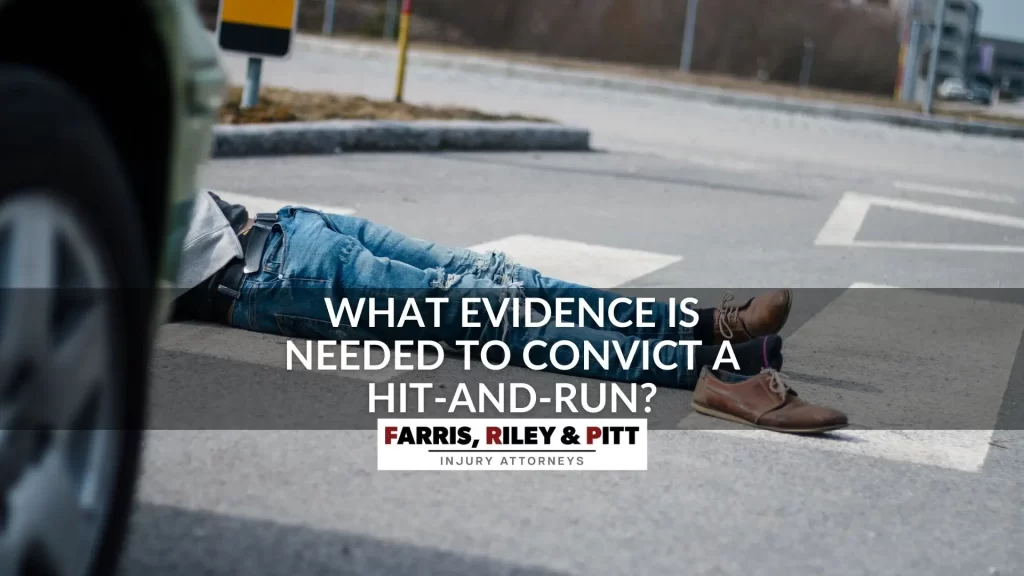Posted on Monday, May 29th, 2023 at 7:51 pm
 If you’re upset and searching for justice after a hit-and-run, know you’re not alone. Many people in Alabama have been through the same ordeal and came out victorious on the other side. It’s not an easy journey, and it requires patience and diligence, but you have the law on your side. In this blog, we’ll walk you through what evidence is needed to convict a hit-and-run offender and how the legal process works in Alabama. The aim of our hit-and-run accident lawyers is to empower you with knowledge, so you can begin to take back control and find the justice you deserve.
If you’re upset and searching for justice after a hit-and-run, know you’re not alone. Many people in Alabama have been through the same ordeal and came out victorious on the other side. It’s not an easy journey, and it requires patience and diligence, but you have the law on your side. In this blog, we’ll walk you through what evidence is needed to convict a hit-and-run offender and how the legal process works in Alabama. The aim of our hit-and-run accident lawyers is to empower you with knowledge, so you can begin to take back control and find the justice you deserve.
Alabama Hit-and-Run Laws
Alabama lawmakers and law enforcement officers take hit-and-runs extremely seriously, and there are state laws that explicitly condemn this behavior. According to the Code of Alabama, anyone involved in a collision with injuries or deaths must stop their car at the scene or as close to it as possible without obstructing traffic. A second law says the drivers involved in a crash must exchange names, addresses, insurance information, and (if the other driver asks) driver’s license numbers. Finally, a third law says drivers involved in a crash with injuries or deaths must “immediately” notify the nearest law enforcement agency.
The penalties for hit-and-run accidents in Alabama are severe, particularly if a driver flees the scene of a collision in which someone sustained an injury or died. State law says if the crash results only in damage to your vehicle or other property, the person who fled the scene has committed a Class A misdemeanor. They could face a sentence of up to one year in jail and have to pay a fine that could go as high as $6,000.
However, if the accident event caused injuries or resulted in a fatality, then the hit-and-run offender has committed a Class C felony, which is a more severe crime. The law provides stricter penalties for such offenses, including a prison term that could range from 1 to 10 years. Furthermore, the guilty party may also have to pay a fine of up to $15,000.
What Can the Police Do After a Hit-and-Run?
The first thing law enforcement officers do after a hit-and-run is document the accident. They record the scene, take note of the circumstances, collect witness statements, and gather any available details about the fleeing vehicle. This information becomes part of an official accident report, which will be crucial in your quest for justice when you are gathering the evidence needed to convict a hit-and-run offender.
With the necessary details in hand, the police can then use their resources to track down the guilty party. They might check nearby surveillance cameras for footage of the accident or the fleeing vehicle. They could also use their networks to find a car that matches the description given by you and any other witnesses.
If they locate the suspect vehicle, they can examine it for evidence such as paint transfers, damage consistent with the accident, or DNA evidence. This evidence is vital in linking the suspect vehicle to the accident.
The police can also issue a media alert, asking the public for assistance. It’s not uncommon for someone to recognize the vehicle from the description or for body shops to identify a car brought in for repair that matches the alert.
Types of Evidence in Hit-and-Run Accidents
 Evidence plays a crucial role in bringing a hit-and-run offender to justice. By understanding what kind of evidence police commonly use in these cases, you can better navigate this difficult journey. Here are some examples of the types of evidence that are often critical in hit-and-run investigations:
Evidence plays a crucial role in bringing a hit-and-run offender to justice. By understanding what kind of evidence police commonly use in these cases, you can better navigate this difficult journey. Here are some examples of the types of evidence that are often critical in hit-and-run investigations:
- Witness Testimony
- Security and Traffic Camera Footage
- Vehicle Damage
- Photographs and Videos
- Accident Reconstruction
- Medical Records
- Police Reports
Recovering Compensation for a Hit-and-Run
Understanding your options for compensation after a hit-and-run accident in Alabama can seem overwhelming at first, but a clear path forward can make things a bit easier. Your first and likely best option for recovering compensation is to file a claim with your insurance company under your uninsured motorist (UM) coverage. All auto insurance providers in Alabama must offer UM coverage as part of their policies. If you didn’t want this coverage, you would have had to refuse it in writing. This specific coverage becomes your safety net when the at-fault driver is either uninsured or, as in a hit-and-run case, cannot be found. UM coverage can shoulder costs like medical bills, lost income, and other losses up to the limits set in your policy.
The other option for recovering compensation after a hit-and-run is to file a claim against the other driver, assuming the police can find them. But there’s an essential rule in Alabama you need to know: we operate under a contributory negligence rule, which means if you’re found to be even slightly at fault, you could be prevented from recovering any damages. Therefore, it’s critical to establish that the other party is entirely at fault, and that’s where an experienced personal injury attorney can make a significant difference in your case, especially when it comes to gathering the evidence needed to convict a hit-and-run offender.
Our Alabama car accident lawyers can help you find a hit-and-run driver, hold them accountable for their actions and recover fair compensation for your injuries. Call (205) 324-1212 or reach out online for a complimentary consultation.
Related Reading:















